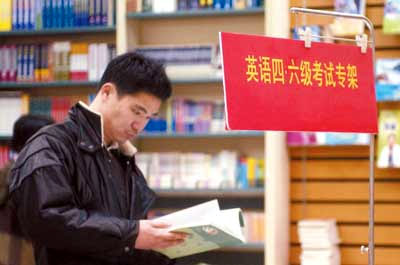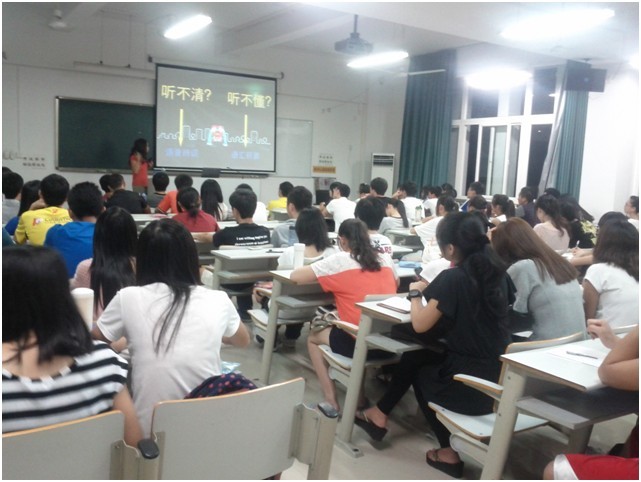 返回
教育头条
返回
教育头条

英语四级翻译真题答案及解析分享 英语四六级报名
小编跟大家一起了解2019年6月英语四级翻译真题答案及解析(灯笼篇)预祝大家高分通过大学英语四级考试!
2019年6月大汇总 题型
(1)灯笼起源于东汉,以前主要用于照明。
解析:考查一主多动词的翻译技巧:同一个主语“灯笼”有两个动词“起源”和“用于”,选择其中一个动词为谓语,另一个动词为非谓语,介词等。考查被动结构翻译:“用于”译为“be used for”;灯笼:lantern;起源:originate from;东汉:Easten Han Dynasty;照明:lighting
参考答案:Lanterns, originating from the Easten Han Dynasty, were first mainly used for lighting.
(2)在唐代,人们用红灯笼来庆祝安定的生活。
解析:考查过去时态。唐代:Tang Dynasty;庆祝:celebrate;安定的:peaceful 参考答案:In the Tang Dynasty, people used red lanterns to celebrate the peaceful life.或者 In the Tang Dynasty, red lanterns were used to celebrate the peaceful life.
(3)从那时起,灯笼在的许多地方流行起来。
解析:考查状语翻译的语序;考查完成时态。从那时起:since then;的许多地方:in many parts of China 参考答案:Since then, they have become popular in many parts of China.

(4)灯笼通常用色彩鲜艳的薄纸制作,形状和尺寸各异。 解析:考查被动结构翻译:“用…制作”译为“be made of”;考查后置定语的翻译:“色彩鲜艳的薄纸”译为“the thin paper of bright colors”;形状:shape;尺寸:size 参考答案:Lanterns in different shapes and sizes are usually made of thin paper of bright colors.
(5)在传统文化中,红灯笼象征生活美满和生意兴隆,通常在春节、元宵节和国庆节等节日期间悬挂。 解析:考查一主多动词:同一个主语“红灯笼”有两个动词“象征”和“(被)悬挂”,将“象征”处理为谓语动词,“(被)悬挂”处理为非谓语动词;考查被动结构翻译:“悬挂”与“灯笼”是被动关系;传统文化:Chinese traditional culture;象征:be symbol of / symbolize;美满生活:happy life;生意兴隆:booming business;春节:the Spring Festival;元宵节:the Lantern Festival;国庆节:the National Day;悬挂;hang(过去分词hung) 参考答案:Hung during the festivals such as the Spring Festival, the Lantern Festival and the National Day, red lanterns are symbol of happy life and booming business in Chinese traditional culture.
(6)如今,世界上许多其他地方也能看到红灯笼。 解析:考查主干的翻译和被动结构的翻译。主干是“红灯笼也能(被)看到” 参考答案:Nowadays, red lanterns can also be seen in many other places in the world.
2019年6月大汇总 题型
(1)灯笼起源于东汉,以前主要用于照明。
解析:考查一主多动词的翻译技巧:同一个主语“灯笼”有两个动词“起源”和“用于”,选择其中一个动词为谓语,另一个动词为非谓语,介词等。考查被动结构翻译:“用于”译为“be used for”;灯笼:lantern;起源:originate from;东汉:Easten Han Dynasty;照明:lighting
参考答案:Lanterns, originating from the Easten Han Dynasty, were first mainly used for lighting.
(2)在唐代,人们用红灯笼来庆祝安定的生活。
解析:考查过去时态。唐代:Tang Dynasty;庆祝:celebrate;安定的:peaceful 参考答案:In the Tang Dynasty, people used red lanterns to celebrate the peaceful life.或者 In the Tang Dynasty, red lanterns were used to celebrate the peaceful life.
(3)从那时起,灯笼在的许多地方流行起来。
解析:考查状语翻译的语序;考查完成时态。从那时起:since then;的许多地方:in many parts of China 参考答案:Since then, they have become popular in many parts of China.

(4)灯笼通常用色彩鲜艳的薄纸制作,形状和尺寸各异。 解析:考查被动结构翻译:“用…制作”译为“be made of”;考查后置定语的翻译:“色彩鲜艳的薄纸”译为“the thin paper of bright colors”;形状:shape;尺寸:size 参考答案:Lanterns in different shapes and sizes are usually made of thin paper of bright colors.
(5)在传统文化中,红灯笼象征生活美满和生意兴隆,通常在春节、元宵节和国庆节等节日期间悬挂。 解析:考查一主多动词:同一个主语“红灯笼”有两个动词“象征”和“(被)悬挂”,将“象征”处理为谓语动词,“(被)悬挂”处理为非谓语动词;考查被动结构翻译:“悬挂”与“灯笼”是被动关系;传统文化:Chinese traditional culture;象征:be symbol of / symbolize;美满生活:happy life;生意兴隆:booming business;春节:the Spring Festival;元宵节:the Lantern Festival;国庆节:the National Day;悬挂;hang(过去分词hung) 参考答案:Hung during the festivals such as the Spring Festival, the Lantern Festival and the National Day, red lanterns are symbol of happy life and booming business in Chinese traditional culture.
(6)如今,世界上许多其他地方也能看到红灯笼。 解析:考查主干的翻译和被动结构的翻译。主干是“红灯笼也能(被)看到” 参考答案:Nowadays, red lanterns can also be seen in many other places in the world.
英语四级翻译真题答案及解析分享 英语四六级报名,如果你喜欢这篇文章,请将其保留版权转载。我的微信号(18560125702)欢迎来咨询,10年教培行业工作经验,如果你在四级六级考试方面有疑问,请与我联系,我将为您提供全面专业的选课帮助。返回教育宝头条
【免责声明】本文仅代表作者本人观点,与教育宝无关。教育宝对文中陈述、观点判断保持中立,不对所包含内容的准确性、可靠性或完整性提供任何保证。请读者仅作参考,特此声明!





